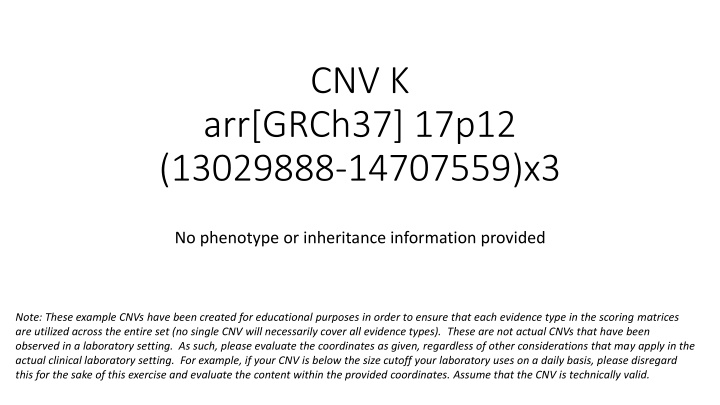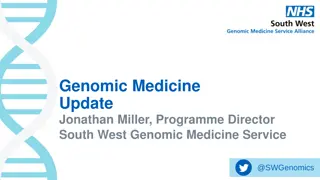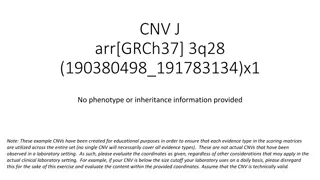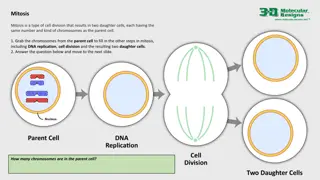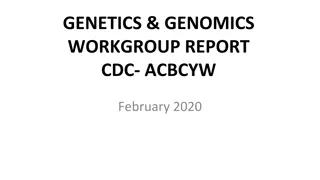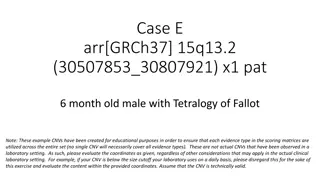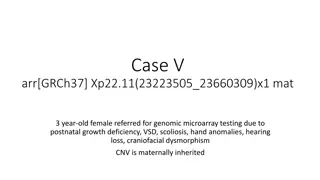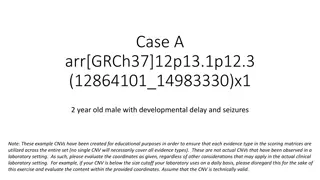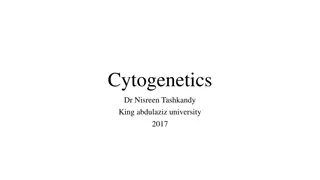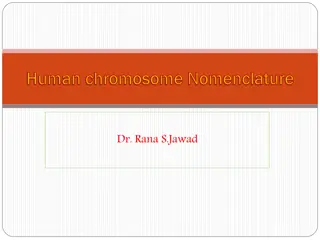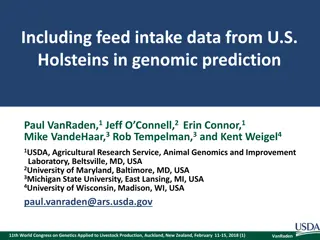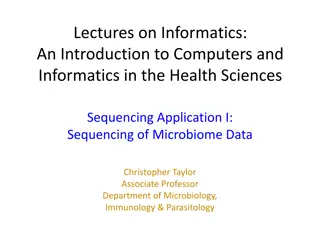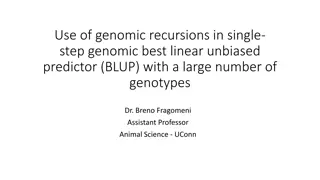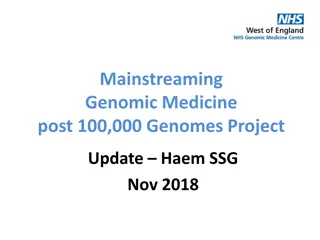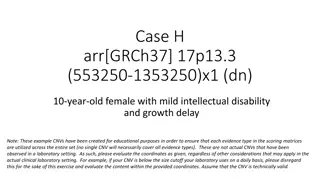Initial Assessment of Genomic Content in CNV.K on Chromosome 17p12
"Evaluation of CNV.K on chromosome 17p12 indicating duplication of protein-coding genes, overlap with known diseases like Charcot-Marie-Tooth, and detailed analysis on triplosensitivity. Genes like CDRT15 and COX10 are examined for potential disease associations."
Download Presentation

Please find below an Image/Link to download the presentation.
The content on the website is provided AS IS for your information and personal use only. It may not be sold, licensed, or shared on other websites without obtaining consent from the author.If you encounter any issues during the download, it is possible that the publisher has removed the file from their server.
You are allowed to download the files provided on this website for personal or commercial use, subject to the condition that they are used lawfully. All files are the property of their respective owners.
The content on the website is provided AS IS for your information and personal use only. It may not be sold, licensed, or shared on other websites without obtaining consent from the author.
E N D
Presentation Transcript
CNV K arr[GRCh37] 17p12 (13029888-14707559)x3 No phenotype or inheritance information provided Note: These example CNVs have been created for educational purposes in order to ensure that each evidence type in the scoring matrices are utilized across the entire set (no single CNV will necessarily cover all evidence types). These are not actual CNVs that have been observed in a laboratory setting. As such, please evaluate the coordinates as given, regardless of other considerations that may apply in the actual clinical laboratory setting. For example, if your CNV is below the size cutoff your laboratory uses on a daily basis, please disregard this for the sake of this exercise and evaluate the content within the provided coordinates. Assume that the CNV is technically valid.
Clinical Information arr[GRCh37] 17p12(13029888-14707559)x3 No phenotype of inheritance information provided Use the GAIN scoring metric
Section 1: Initial Assessment of Genomic Content Case K Genes Involved Would apply category 1A (contains protein-coding or other known functionally important elements), as this duplication includes several protein-coding genes. 0 points; continue evaluation Total: 0 points
Section 2: Overlap with Established TS, HI, or Benign Genes or Genomic Regions Case K 17p12 Recurrent Region PMP22 CNV K overlaps with the known TS 17p12 recurrent region; duplications of this region are associated with Charcot-Marie- Tooth disease. However, CNV K does not appear to include PMP22, the recognized causative gene. Category 2B, 0 points Total: 0 points
Section 3: Evaluation of Gene Number 4 protein- coding genes (Category 3A: 0 points) Total: 0 points
Section 4: Detailed Evaluation of Genomic Content Is there any evidence to suggest any of the genes included within CNV K are triplosensitive? Is there any evidence to suggest that duplications of the 17p12 recurrent region WITHOUT PMP22 cause Charcot-Marie-Tooth disease (or any other phenotype)?
Investigating the genes in the interval individually CDRT15 Not described in OMIM, no relevant literature linking it to human disease COX10 Variants in COX10 have been identified in individuals with autosomal recessive Leigh syndrome (PMIDs 15455402, 12928484) Proposed disease mechanism is loss of function Gene is completely contained within the duplication interval; complete extra copy of the gene unlikely to even result in carrier status. HS3ST3A1 No relevant literature linking it to human disease HS3ST3B1 No relevant literature linking it to human disease
Have duplications of 17p12 without PMP22 been reported in individuals with CMT? Weterman et al. 2010 (PMID:19888301) reports a smaller, 186 kb duplication in 11 individuals from 6 apparently unrelated families with clinical diagnoses of CMT. Junction breakpoints located 90kb [from the] proximal CMT repeat region on one side, and 3kb upstream of PMP22 in the genomic region between PMP22 and TEKT3on the other side. Segregated with disease within families Breakpoints found to identical in all individuals, indicative of a founder variant; polymorphisms in the TEKT3 gene clearly showed an identical haplotype shared by all patients. Sequencing of both PMP22 and TEKT3 showed no potentially causative variants PMP22 expression was studied in skin fibroblasts in 2 patients Did observe increased Schwann cell-specific PMP22 expression compared to controls, but increased expression was also observed in an unaffected family member. Authors postulate that this duplication affects PMP22 expression levels through an as yet unidentified mechanism. From Weterman et al. 2010
Zhang et al. 2010 (PMID:20493460) Further studies two probands described in Weterman et al. 2010 Describes an additional individual, SPR1, with a clinical diagnosis of CMT and a 194kb duplication within 17p12 not including PMP22 One breakpoint ~9kb proximal to PMP22 From Zhang et al. 2010
What does this mean for our assessment of CNV K? Though rare, duplications of 17p12 without PMP22 have been reported in individuals with clinical diagnoses of CMT However, the reported duplications have involved genes that are proximal to (and upstream of) PMP22 and NOT included in CNV K Because all reported cases have involved the immediate region upstream of PMP22, it is postulated that they affect regulatory mechanisms While this does tell us that it is possible for some duplications within 17p12 to cause CMT without physically duplicating PMP22, it does not provide any evidence that the genomic region involved in CNV K can cause CMT. Total: 0 points
Population Data Case K DGV Gold Standard Variants No significant population data found within DGV Gold Standard or gnomAD SV as of June 2020 Total: 0 points
Section 5: Inheritance Pattern/Family History for Patient Being Studied No phenotype or inheritance information is provided for our case Use Section 5F, Inheritance information is unvailable or uninformative Total: 0 points
Conclusion Classification: VUS While duplications within 17p12 not including PMP22 have been reported in individuals with CMT, they have been reported involving regions proximal to ours, and involving the genomic area upstream of PMP22, which is not included in CNV K. Additionally, no phenotype information has been provided. Attempt to obtain additional information from ordering provider. If clinical suspicion warranted, could consider additional studies of PMP22 to determine if it is included in the CNV K (if this is a possibility based on probe coverage) or assess its expression level. If further studies confirm the involvement of PMP22, classification of CNV K would change to Pathogenic.
